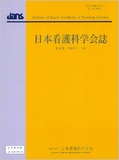Japanese
English
- 販売していません
- Abstract 文献概要
- 参考文献 Reference
要旨
目的:生体肝移植成人レシピエント(肝レシピエント)に携わる一般病棟看護師の認識と看護実践を明らかにすることとした.
方法:肝レシピエントを担当した看護師へ,そのケア経験について半構成的面接を行い,内容分析し,サブカテゴリー化,カテゴリー化した.
結果:7名の調査協力があった.認識では7カテゴリーと26サブカテゴリーが生成され【生体肝移植前における他の外科系手術の術前看護との相違】【レシピエントと共にあるドナーに対する体調や心境の配慮と困難さ】等を認識していた.看護実践では11カテゴリーと32サブカテゴリーが生成され,【入院時からセルフマネジメントの支援者および在宅環境を確認し,必要時は調整しながら退院指導を行う】【免疫抑制剤を確実に内服できるよう工夫し,内服の重要性を意識づけ指導する】等の実践があった.
結論:肝レシピエントをケアする一般病棟看護師の認識と看護実践が明らかになり,困難感も示された.その解決に向け,体系化された教育プログラムの開発が必要と考える.
Purpose: To clarify the recognition and nursing for patients with end-stage liver diseases who have undergone liver transplantation (recipients) in the general ward.
Methods: We recruited nurses who cared for recipients in the general ward. We asked about their experiences with transplantation nursing in a semi-structured format. We also analyzed the contents and categorized them into subcategories and main categories.
Results: Seven nurses were included in this study. For recognition, seven categories and 26 subcategories such as “How preoperative nursing for living-donor liver transplantation differ from the other surgical operations” and “Concerns about the donor's physiological and psychological condition, and the recipient's life and its difficulty” were generated. Regarding the nursing practice, 11 categories and 32 subcategories such as “Ascertain people who were willing to support recipients' self-management and the environment in recipients' home from the admission, and guide to discharge and to support recipients' circumstances if needed” and “Devise strategies to ensure immunosuppressants intake and strengthen the recognition about the importance of immunosuppressants intake” were generated.
Conclusions: The perceptions and nursing for recipients in general ward were cleared. Of the perceptions and nursing for recipients, some nurse perceived it's difficulty. This study indicated that developing a systematized educational program to improve care for recipients might be needed to resolve these difficulties.
Copyright © 2022, Japan Academy of Nursing Science. All rights reserved.


